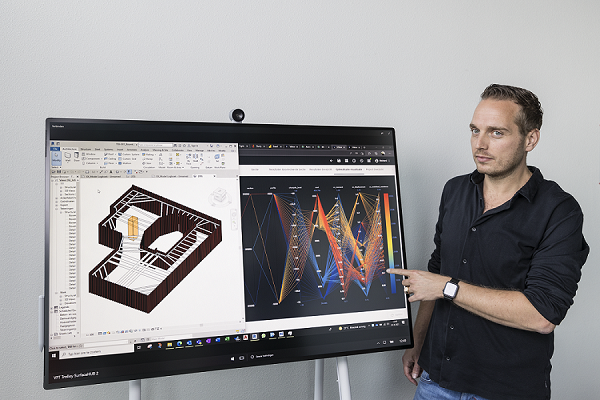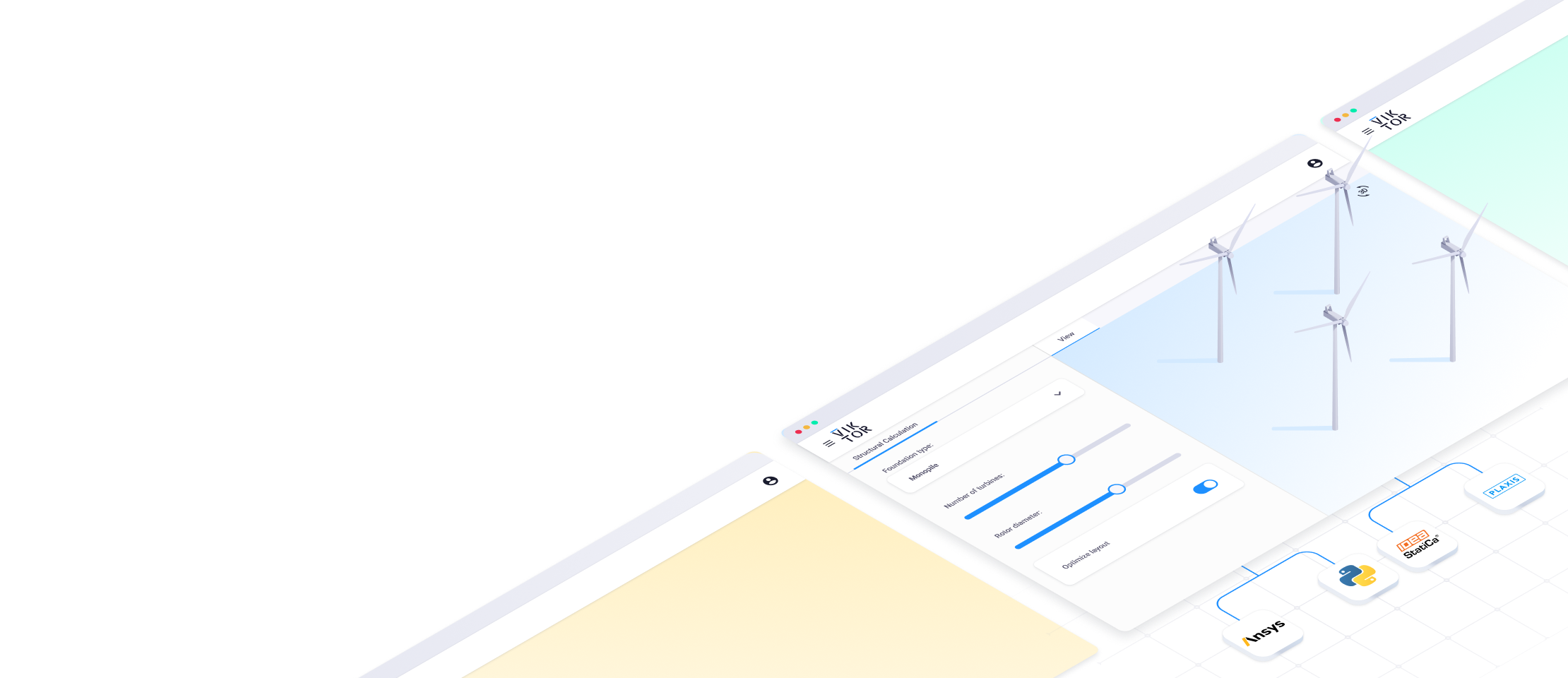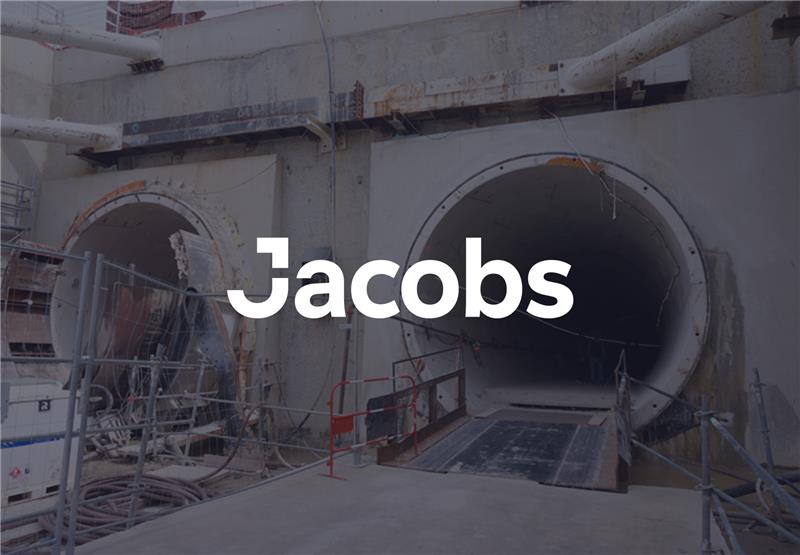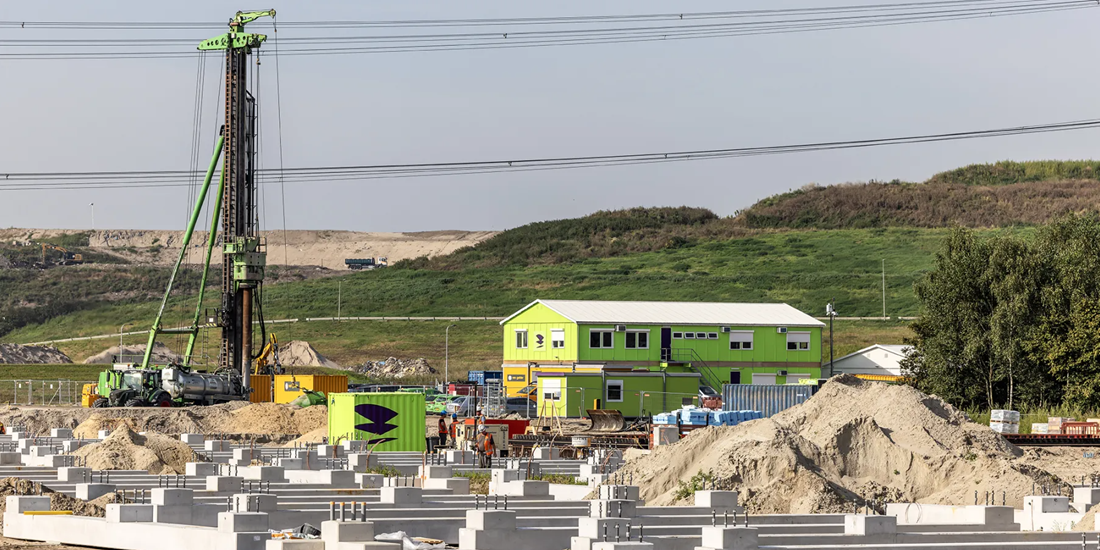

Download the White Paper and get INSPIRED
Find how you can use AI automate engineering processes in your organization.
Predicting pile driving times
For many buildings in the Netherlands, a deep foundation is required to make sure that the construction load can be transferred to lower and more stable ground, as massive soil layers that can absorb large foundation loads are often located deep below the surface. The foundations of large structures, such as distribution centers or traffic overpasses, can often require the installation of thousands of piles at these depths. For both cost estimation and planning it is important for Voorbij Funderingstechniek to be able to estimate how much time this process requires.
Currently, estimates of pile driving times are done based on information about the soil composition (sand, clay, etc.) of a location, obtained from CPTs. Because the registration of pile data (pile measurements and CPT data from customers) has recently increased significantly, it has now become possible to make (and improve) predictions of pile driving times for future projects by applying machine learning techniques to the available data.
Machine Learning
Part of Voorbij Funderingstechniek’s service is their ability to invest their time efficiently and predict the progress of projects as accurately as possible. By applying machine learning to the CPT and pile data, they can improve this process – and by that their service as well.
Database
Pile driving speed mainly depends on soil properties. By applying a machine learning approach, it becomes possible to predict pile driving speeds. The only requirement for this is that sufficient pile-driving and CPT data has been collected (at the right depths). For this reason, it is very advantageous that Voorbij Funderingstechniek has their own database, called (Base FT), for logging all project data, including pile driving and sounding data.
The model
The machine learning algorithm that Voorbij chose for this is a supervised machine learning model that uses an artificial neural network (ANN) to predict pile driving speeds based on CPT data. The algorithm is implemented within the VIKTOR platform, where it is trained on previously measured pile driving speeds and the associated probing data. During the training of the model, the ANN adjust itself in such a way that it can predict the correct pile driving speeds with data from CPT values. In the VIKTOR app, engineers can use training data to train the machine learning model themselves and apply it to projects.
The application
Voorbij used their training data so that the machine learning model can be applied to two relevant real-world scenarios within their VIKTOR app. The two different scenarios, which will be explained further below, yielded different results in terms of accuracy. The predicted pile driving times were compared with the actual recorded times to determine the accuracy.
Scenario 1: Individual projects
In the first scenario, Voorbij first presents the model the results of a test dataset at the start of an individual project. Then they use some pile measurements (10%) as a training data set. Based on this data set, the ANN can then predict pile driving speed for the other piles (90%). The predicted pile driving speeds adapt in this scenario to the speeds of the test data set and can be used to improve the estimation of the total project time. After training, the model can predict pile driving speeds at certain locations as a function of depth at the locations of the test datasets. For example, for one construction project, the model was able to predict the pile driving speed on the test site set with a margin of error of only 10%.
Scenario 2: Multiple other locations
In the second scenario, the machine learning model is trained with a complete dataset of pile driving speed measurements from one or multiple other locations. The model also receives a test dataset with pile-driving speed measurements from yet another location. These predictions can then be used to estimate total project time even before the project starts. Because in this scenario the predictions of the model are adjusted to the measurements of the training dataset, this caused the performance of the model to decrease significantly compared to the previously mentioned scenario.
The results of the predictions of the total pile driving times in both scenarios are shown in the graphs for two separate projects with different soil compositions.
left: scenario 1, right: scenario 2
The graph to the right presents the velocity measurements of the less accurately predicted project (scenario 2). Lack of accuracy can be explained, among other things, by the fact that the speed may or may not have been equal to zero at certain moments. The pile driver cannot register this, so the number is rounded to 0 meters per second. Evidence for this can also be seen in the scatter plots. These show the registered pile driving time against the calculated pile driving time. The black dots indicate a speed of 0 meters per second or more. The green dots indicate a speed of 0 meters per second.
Using the app yourself
An open-source sample version of the machine learning application is now available as well. With the app you can predict pile driving times based on the entered GEF files by applying one of the two machine learning models. The app automatically generates visualizations of the entered GEF files for inspecting the soil structure, classified using the Robertson method. In addition, the app generates force estimation plots as well as a map view of CPT locations.
Using the app is simple: in only three steps you can predict pile driving times with one of the two machine learning models.
- First, you upload the GEF files.
- Second, you define the parameters.
- Third, you check the automatically generated results.
The app can be used with or without VIKTOR. For those who want to implement the functionality themselves, the open-source code is available via the GitHub environment of VIKTOR. You can try the app directly your own VIKTOR environment by using the free version of VIKTOR.



